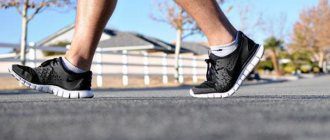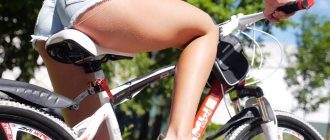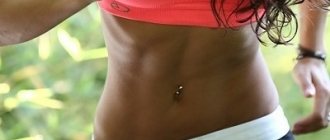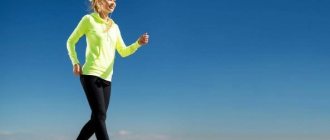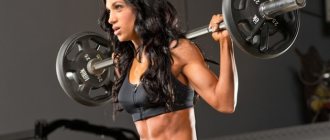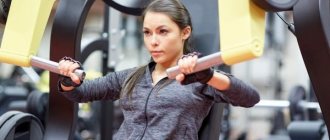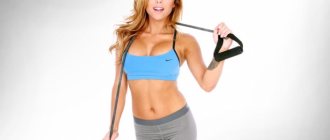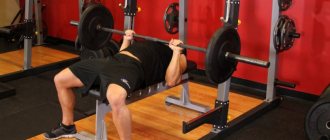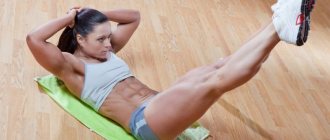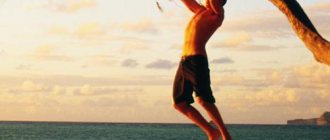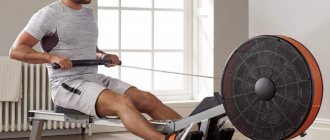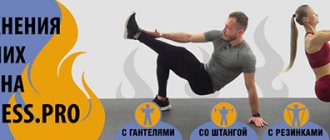How to swim to lose weight?
Scientists say that to lose 1 kilogram of weight, you need to reduce your weekly diet by 7 thousand kilocalories.
But you don’t have to go on a strict diet! You can only increase your physical activity. This is where swimming comes in handy because swimming is a cardio workout that works your heart and also helps you burn extra calories. So, one hour of training in the pool can burn up to 800 kilocalories! But don’t forget that the number of calories burned depends on your body weight. That is, if you weigh 100 kilograms, then you will burn more kilocalories. For example, if your weight is 100 kilograms, then in an hour of training you can spend approximately 750 kilocalories. But a person who weighs fifty kilograms in the same time can get rid of 450 kilocalories.
Firstly, to lose weight you need to exercise regularly in the pool. Preferably 4-5 times a week, but for beginners you should start practicing 2-3 hours a week. Secondly, the lesson must last at least 45 minutes or 60 minutes, otherwise there will simply be no point in it. Next, you should build on your level of swimming ability. We have prepared different tips for swimmers of different levels. Let's start from the lowest level.
NUTRITION FOR A SWIMMER BEFORE SWIMMING TRAINING
Proper nutrition is a very important factor for swimmers, since during swimming, a swimmer spends a lot of calories that need to be restored. To do this, you need to completely give up junk food and eat food that is rich in vitamins.
NUTRITION FOR A SWIMMER BEFORE SWIMMING TRAINING
- Also, the food should contain a sufficient amount of protein, fats and carbohydrates. It is best for a trainer to create proper nutrition; he will take into account age, gender and the intensity of the training. It is also best to consult a sports doctor; he will tell you which vitamins you need more and which ones you need less.
Before training, you should never overeat, the training will be very difficult and this will only be a minus for you. Also, you should not eat immediately after training; your meal after training should be an hour later.
If you do not drink and consume the required amount of food, then sports nutrition will help you with this. With sports nutrition you will achieve your goals. You also need to drink more water, especially if you have heavy loads, and under no circumstances should you replace water with another liquid, such as juice, drink, tea.
What muscle groups are involved when swimming?
Swimming requires endurance and strength. It is due to these qualities that the body moves forward and is held on the water in one cycle of perfect movements. The human body in the pool is deprived of support, and only with the synchronous work of the limbs can one stabilize the position in the water or move. Let's look at which muscles work most actively when swimming.
In total, in the human body there are several main muscle groups, classified as large ones, which are involved in physical activity, including swimming.
These are the following muscles:
- pectoralis major;
- bi- and triceps brachialis;
- deltoid;
- trapezoidal;
- latissimus dorsalis;
- oblique abdominal muscle;
- rectus abdominis;
- quadriceps on naked;
- biceps muscle on the legs;
- gluteus maximus;
- calf muscle;
- flexors of the foot and ankle.
Each of the swimming styles that exist at the moment affects these muscle groups and as a result, swimming front crawl, breaststroke and butterfly you have a chance to keep your whole body in good shape.
Swimming front crawl is the fastest swimming style, and accordingly, the load is also maximum. The main muscles working when swimming front crawl are the muscles of the shoulder girdle. But the muscles of the legs and core are also involved.
The intensity of movement with the arms is much higher than the legs, so the muscle tissue is worked more thoroughly.
The muscles involved in the shoulder girdle are:
- two-headed;
- triceps;
- chest;
- widest;
- triceps
Also, when swimming the front crawl, the leg muscles are actively active:
- quadriceps;
- two-headed;
- gastrocnemius.
When swimming front crawl, the swimmer's torso also participates in the movement. The following muscles work:
- serratus anterior;
- oblique abdominal muscles;
- external abdominal muscle;
- rectus abdominis muscle;
- chest;
- large and small diamond-shaped;
- round;
- trapezoidal;
- latissimus dorsalis.
When swimming breaststroke, the following muscle groups are involved:
- back;
- trapezoid;
- widest;
- diamond-shaped
The work of the muscles when swimming in the breaststroke style is aimed at holding the body on the water with the hands, and the legs hit the water with pushes. Therefore, when swimming breaststroke, the following muscle groups in the legs work:
- femoral adductors;
- anterior tibial;
- gluteal;
- two- and four-headed;
- calf.
The triceps and biceps and the finger flexor muscles work the most in the arms.
The style with a beautiful name translates as butterfly style. This is the most difficult method of swimming, requiring maximum energy consumption due to the complexity of coordination. All muscle groups are involved, since the swimmer's movements occur symmetrically with the left and right parts of the body.
The muscle groups that develop when swimming in the butterfly style are as follows:
- shoulder (tri- and two-headed);
- dorsal;
- chest;
- abdominal muscles;
- calf;
- femoral quadriceps.
The back crawl is not as fast as the front crawl, but it works the largest number of back muscles:
- deltoid;
- two-headed;
- triceps;
- lats;
- calf.
The level position of the body on the back works its flexors. To stabilize the body on the surface of the water, the gluteal muscles and the back of the thigh are involved.
Actively working in hands:
- rotator cuff;
- serratus anterior;
- teres major muscle.
We suggest you familiarize yourself with How to take monastery tea correctly.
Considering what muscles swimming in the pool develops, you can identify a pattern - all professional swimmers have their own external specifics.
So, during the crawl on the stomach, the muscle corset evenly develops, during the breaststroke - the muscles of the legs, calf and thighs; during the crawl on the back, weaker muscle development is observed. The muscles of a butterfly swimmer are highly developed in the legs and shoulder girdle.
How to do exercises in water correctly
There is one exercise that will instantly give results from the movements performed: lying on a pillow, you need to make several movements with your arms and legs. Hold on to the edge of the pool and bend in different directions. If you feel pain, stop the exercise.
The following steps will tell you how to strengthen your back muscles in the pool:
- lie down on the rope. Extend your arms at the head area. Feet should lie calmly on the water;
- lie down on the rope again and clasp one path with your hands and put your feet on the other. Keep your back straight. Tighten all your muscles;
- Now place your legs on the side so that your pelvis also touches it. Place your back on the water and spread your arms to the sides. Relax and close your eyes. Lie down for 5 to 10 minutes.
Back exercises are performed using special equipment or a simple rope.
Let's figure out how to strengthen your legs and make them beautiful and attractive. To do this, we need to do a few simple steps:
- cross step. The essence of the exercise is that the left leg replaces the right. Actions are performed as energetically as possible;
- jumping. During this exercise, your knees are bent and your hands are in the water. Next, you jump and raise your arms up. Try to overcome the resistance of the water;
- stretching. The exercise should be performed near the edge of the pool. Bend to the side. The free hand falls behind the head.
- Anterior muscles of the thigh and pelvis - movement in the knee and hip joint.
- The quadriceps femoris muscle flexes the leg at the hip joint and extends the knee. The quadriceps is the largest muscle in the human body.
- Iliopsoas muscle - flexes the leg at the hip joint.
- The sartorius muscle and the tensor fascia lata - abduction and flexion of the leg at the hip joint, its rotation.
- Adductor muscles (including gracilis and pectineus). Adduction of the leg at the hip joint, flexion of the leg at the knee and hip joint.
- Posterior muscles of the thigh (semimembranosus, biceps, semitendinosus) - flexion of the leg at the knee and extension at the hip joint.
- Calf muscles (peroneus, tibialis, soleus, gastrocnemius) - coordination of movements in the ankle joint.
- Gluteal muscles - ensuring abduction and rotation of the leg, extension of the leg at the hip joint.
The Sports Swimming online store offers a wide selection of products and accessories for the pool such as goggles, caps, hydroshorts and swimsuits for adults and children, for every taste and budget. We have everything you need for the best results.
Exercises for weight loss in the pool
There are many types of swimming, but which ones are the most effective for combating excess weight? Now we'll figure it out.
So, experts say that the best way to burn the most calories is butterfly swimming. There are reasons for this. If you have been swimming, you probably know that this is the most difficult style. When swimming with this style, all abdominal muscles are involved. This will help get rid of excess fat on the abdominal muscles.
Next in the top styles for weight loss is freestyle. This style is especially popular among women. This style is simple, which is why freestyle has a lot of fans among fitness fans.
Don't forget about breaststroke. Breaststroke doesn't burn as many calories as butterfly. However, for beginners, this is the best way to improve their skills in a sport like swimming.
The most effective way to tighten your entire body and lose weight is aerobics in the pool. It will help burn a huge amount of calories and get rid of cellulite.
Grasp the side with your hands, lift your two legs so that a ninety-degree angle is formed. Hold for 10 seconds, then lower your legs. Repeat the exercise 10 times. Increase the number of repetitions over time.
Grasp the side with your hands, bend your knees and pull them towards your chest. This exercise is great for toning your lower abdomen. Repeat this exercise 10 times.
Put on weights and bend your elbows to form a ninety-degree angle. This exercise will help remove fat in the area most hated by women.
The most effective exercise for burning fat in the triceps area. Put on weights, lean forward and begin to extend your arms back. It will be difficult for you at first, but regular training will fix everything.
With each workout you need to increase the load. This way you can avoid the plateau effect, which is a sore subject for many girls when losing weight.
How long does it take to work out to get pumped up?
Please note that when swimming in the sea, the same muscles work as in the pool. The type of body of water does not affect the group of muscles involved. However, the natural reservoir and natural conditions often have an impact on the load. For example, a strong current makes progress difficult, forcing the swimmer to increase effort as he swims backwards. Sea water better holds the body on the surface, reducing the load on the muscles responsible for balance and balance.
During training in deep water, the athlete is influenced by wind, sun, bottom quality, waves, etc. Classes in an artificial environment are easier to plan and control.
In conclusion, let's talk about how much and how to swim correctly to strengthen the muscles of the back, legs and arms.
- Follow your schedule and don’t miss classes;
- Control the load;
- Use complex swimming (alternating styles);
- Keep an eye on your technique.
On average, after just a month of active training you will feel and notice the first results. You will clearly understand whether the abdominal muscles work when swimming by seeing the outlines of the desired cubes. Of course, if you are overweight, it will take much more time. However, a month later the volumes will definitely become smaller and the weight will decrease. Of course, subject to stable training, proper nutrition and proper rest, including night time.
Well, we found out which muscles benefit from swimming in the pool, and also which of them work more actively in each of the 4 styles. Based on this information, you can safely draw up a lesson plan. I wish you a beautiful body and high sports results!
Development of the muscles of the shoulder girdle and torso during swimming
The muscles of the shoulder girdle and back are the most motor muscles when swimming. Some forces are transferred to the shoulder girdle to the arms from the back by straightening the shoulders when rowing the teres major muscle. Between the lower and upper body during movement, the connection is made by the muscles of the core and abdomen, which perform a variety of movements to stabilize the swimmer in the water. There are several most popular exercises in water that help develop the shoulder girdle and torso.
We put on short fins for swimming, take a board or kickboard and do a good job with our feet. We work alternately: 50 meters of the legs perform the same movements as in the crawl; 50 meters of the legs perform a simultaneous impact on the water, as in the butterfly.
Important points when working with legs:
- Do not bend your knees;
- The downward impact on the water is performed with the same force as the upward impact on the water.
- Impacts on the water are made due to the movement of straight legs in the pelvis.
This exercise will perfectly work the lateral muscles of the body and legs.
Take the board in one hand:
- The hand with the board is straight;
- The body lies on the water;
- The second hand is next to the first, but does not hold onto the board;
- Use your free hand to make a stroke;
- You take a breath;
- We return the rowing hand forward to the board.
This exercise will help you work not only on your crawl technique, but will also strengthen your upper waist muscles.
Crawl on chest
The front crawl is perfect for those who like to swim fast, as it generates a lot of force in the body.
When swimming with this style, the muscles of the chest, latissimus and other back muscles play a decisive role.
Because this exercise requires rapid movement of the arms overhead and then down the sides of the body, you will increase the potential of your fast-twitch muscle fibers, leading to increased speed and power.
Breast crawl is perfect for those who like to swim fast
How to swim for weight loss
- Start with workouts lasting 45 2-3 times a week.
- At the pool, ask the trainer for a special board that will keep you on the water.
- Don't forget about warming up on land. Do joint exercises.
Also, don’t forget about warming up in the water.
- Next, alternate the two swimming styles. This is the best option for swimming to burn calories. Alternation pattern: swim on your back for 5 minutes, then rest for 1 minute; then swim breaststroke for 5 minutes, and take 1 minute to rest; end the cycle with a five-minute crawl.
Repeat this pattern until you feel tired. You should also always remember how many meters you swam during a workout. In each subsequent workout, increase the load.
Without a doubt, the best way to lose weight through swimming is through interval training. Such training will not only help you get rid of fat mass, but they can also help you tighten your entire body, get rid of cellulite, and such training is also very effective for those who have scoliosis, osteochondrosis or any other problems with the spine.
We invite you to familiarize yourself with Vertical Platform Bench Leg Press
After all, when we are in water, the weight of the body does not put pressure on our spine; in water it stretches due to the lack of load, due to this we get beautiful posture. Interval training, unlike aerobic training, will help you burn about 800 kilocalories in an hour and a half! However, such training requires a high level of preparation. After all, interval training is particularly intense and requires a high level of endurance.
Be sure to do a thorough warm-up and cool-down both on land and in the water. This will help avoid injury.
- Swim butterfly or freestyle for 30 seconds. However, at the same time, give your best. Then switch to breaststroke for 30 seconds, then reduce the pace. Rest for one minute. Repeat the cycle from the beginning.
During the entire workout you should do at least five cycles, but no more than ten.
Which type of swimming to choose for your back?
Swimming correctly is useful not only for training your back muscles, but also for maintaining beautiful posture and losing weight. It is better to talk to your doctor about choosing a style to prevent osteochondrosis.
We suggest you familiarize yourself with what medications for cerebral vascular spasms
Before starting training, you need the help of a competent trainer and general information about swimming styles:
- If you swim butterfly correctly, all muscles will be subjected to a small load, but especially in the shoulder and back area;
- Swimming in the crawl style allows you to train your back and shoulders, muscles of the hips and buttocks;
- Breaststroke swimmers train muscle structures along the entire length of the spine;
- If you swim on your back, the main load is placed on the back muscles, as opposed to the arms and abdomen.
The benefits of a swimming pool for the spine are beyond doubt. Training in the weightlessness of the water element removes stress from the vertebrae and discs with a high range of motion of the joints.
Whatever type of swimming a patient with osteochondrosis chooses, the exercises will help restore the tone of the muscle corset and strengthen the muscles that stabilize the position of the spinal column.
Leg muscle development
The anterior thigh muscles are responsible for the movements of the legs when swimming. The buttocks provide abduction and rotation of the leg, extension in the hip joint. All rotations and movements in the ankle occur with the participation of the muscles in the lower leg. You can strengthen and develop your lower limbs with simple exercises involving your legs.
The “Running in Place” exercise in the pool will help strengthen your ankles and knees; if performed with high intensity, your hips will tighten a little. In the initial position, the person is standing on the bottom, simulating running in place, similar to running on land.
The main rules when running in place:
- Raise your shins to an average height from the ground (to the level of the pelvis);
- The knees are strictly above the feet;
- Keep your body straight without leaning back;
- The stomach is tucked;
- Hands are pressed to the body;
- Shoulders are relaxed;
- Don't hold your breath.
The exercise “Jumping with leg extensions” is done to strengthen the pelvic region and hips, shoulders and chest.
- The legs in the starting position should be apart;
- Hips are tense;
- Knees slightly bent.
When jumping with your hands, the force of jumping out of the water increases; with your feet, a person pushes off from the bottom and spreads to the sides. You can diversify the exercises by jumping with fins on your feet.
Preparatory activities before swimming
Before entering the water, you need to take a warm or hot shower. This is a kind of warm-up before swimming. Hot water activates blood circulation and warms up muscle mass. If you jump into the water without any warm-up, the muscles of your lower legs and feet will begin to cramp, and this is very unpleasant and also dangerous.
Before visiting the pool you must take a hot shower
We can make an unambiguous conclusion that going to the pool has a beneficial effect on the condition of the body as a whole and tones the entire muscle mass of a person.
Don't wait for summer, but grab a swimsuit, a towel and start attending workouts to improve your health, which will ultimately give you an impeccable figure.
Why should you choose swimming for quick and high-quality weight loss?
- Swimming strengthens the cardiovascular system, which will have a good effect on your endurance.
- Exercising in the pool will help you straighten your spine, due to this you will stretch out, which will give you a slimmer look.
- Swimming improves your metabolism, which helps you lose weight faster.
- Swimming prevents sagging skin during weight loss, which is important for people with less elastic skin.
- Swimming burns a lot of calories.
- During swimming, a huge number of muscles are used.
- During exercise, the lungs begin to work harder. Swimming makes you breathe harder, which means your body is working harder too. This way, your lungs and heart will become stronger, and you will be able to increase your productivity.
- Exercising in the pool can help improve stretching. If you have long dreamed of doing the splits, but you just couldn’t do it, then after regular swimming lessons, you will be able to easily do the splits.
Tips for greater efficiency
To get the maximum effect from swimming in the pool, you must adhere to the following recommendations:
- Your physical activity should not be limited to swimming. Lead an active lifestyle during the day.
- Before entering the water, stretch your body (bending, twisting, swinging your legs and arms).
- Start performing all exercises slowly and a minimum number of times. As your muscles strengthen, you can increase the tempo and number of repetitions. The same applies to swimming.
- Breathe correctly. If you lose your rhythm, swim on your back for about five minutes. This will give you some rest and restore your breathing rhythm.
Important! It is advisable to start mastering the exercises by working with a trainer. He will show you the correct technique, since it is extremely difficult to master it yourself.
So, now you know which muscle groups are involved in the most common swimming styles, as well as what exercises will help you quickly develop your muscular skeleton. We hope this information will help you with your pool activities.
How does swimming affect your figure?
Intensive swimming requires significant effort to maintain the body in the water, strokes and overcome water resistance during movement. This promotes the harmonious development of muscles and joint mobility. Regular visits to the pool can help you get rid of extra pounds and centimeters in volume.
In particular, swimming reduces the circumference of the hips, which is what many women strive for in the struggle for a slim figure. In men, the shoulder girdle is strengthened, which gives the appearance of masculinity and generally strengthens the torso. When visiting the pool, you should not expect the appearance of pumped-up triceps, six-pack abs or powerful chest; these muscles can only be pumped up by strength training in the gym. But you will succeed in tightening your figure and getting a healthy and harmoniously developed body!
We invite you to familiarize yourself with Tomato smoothie recipes: the best preparation
For the maximum weight loss effect when training in the pool, you cannot do without consulting a trainer. The specialist will suggest the required frequency of exercise, teach the basics of proper breathing and exercises for different muscle groups, which will speed up the desired weight loss. Each swimming style works different muscle groups, so by alternating methods of movement in the water you can achieve a harmonious workout of the whole body.
To lose weight in the pool you need to exercise for at least 45 minutes. On average, about 370 kcal is spent if you are in the water in motion all this time. You can increase the calories burned by increasing your swimming pace. So, at 2:30 min/100m the body spends 220 kcal per hour, and at 1:30 min/100m – as much as 500 kcal. Intense workouts increase your heart rate, which has a positive effect on weight loss.
In the struggle for slimness, people are interested in how soon they can expect the first results. This process cannot be accelerated even with daily visits to the pool. Muscles develop rather slowly, so you won’t be able to get a beautiful body in a week. But you can get rid of fat deposits, tighten your figure and create beautiful relief quite quickly, and you will notice the first results within a month if you patiently exercise twice a week or more often.
The main load when moving in water falls on the shoulder girdle, so the abs and other “problem” areas are much less involved.
Swimming will help in the fight against excess weight, strengthen blood vessels and the heart, improve the relief of the figure and lift your mood. The pool can be an excellent alternative to the gym, not inferior in its effectiveness to many types of training.
Pros and cons of swimming in the pool
Swimming in the pool should be fun. If your muscles hurt after training, then you should thoroughly work on your technique; most likely, it is incorrect. If you exercise through pain, then such training will not bring results and may have a negative impact on your health.
Swimming in a pool has its positive and negative sides. The advantages of water activities are as follows:
- A good load on the body as a whole; almost all muscles are involved in the work, which allows you to effectively correct your figure.
- Swimming strengthens and improves your health, allowing you to get rid of some ailments, such as asthma.
- Water speeds up recovery in people who have been injured.
- Swimming in the pool strengthens the respiratory and cardiovascular systems and has a beneficial effect on the entire body. For those who want to maintain their health and maintain body tone, a swimming pool is the ideal solution.
- Water helps burn fat and activates the weight loss process.
- The pool helps pregnant women keep their muscles toned, and after the birth of their baby, they can quickly restore their former slim figure.
Swimming lessons for children from 3 to 7 years old. Is it possible for pregnant women to swim?
Visiting the pool has a lot of positive aspects, but there are also disadvantages. They are as follows:
- Water contains many pathogenic bacteria; people with weakened immunity are at risk of getting sick.
- The water in many swimming pools is still purified with chlorine. It causes allergies in many people; women note a deterioration in the condition of their skin and hair.
There are not many downsides to training in the pool. Water is beneficial in most cases. Doctors often advise people for whom regular exercise is contraindicated to replace it with swimming. Often obese individuals who want to get rid of fat begin their journey in sports precisely from the pool. Swimming is easier for such people, and the resistance of the water helps them achieve better results. Therefore, let's swim as often as possible, enjoying the process. This will help you stay slim and improve your health.
Nuances
- Before training, check the water temperature in the pool. It is very important. When the water temperature is too high (below 24 degrees), the body goes into emergency mode and begins to accumulate fat.
- There are a number of contraindications. The pool should not be visited if you have diseases such as nephritis, hypertension, arrhythmia, heart failure, various skin diseases, and so on.
- Never forget to stretch before and after your workout. This approach will help avoid excessive muscle gain. After all, during active work of the muscles, they become clogged, which can cause them to become more massive. Stretching will help prevent this phenomenon. But also don’t forget about massage, this is especially useful if you often swell.
- You shouldn't just swim like a frog. Many girls come to the pool and swim for several hours in this style. However, after a while, these girls do not notice the results, because this method helps to burn much less calories than interval training.
- To lose weight more effectively, you need to breathe properly. Inhale over the water and exhale into the water. Focus all your attention on the exhalations, not the inhalations. This is very important, because otherwise you will quickly run out of steam. Another tip: when you are not breathing, do not shake your head. Always keep your head straight and in one position. Breathe rhythmically and calmly. The problem many beginners have is that while their head is in the water they hold their breath, and then they raise their head and try to inhale and exhale in the air as quickly as possible. This is not true! You need to exhale while your head is in the water. This way you can swim much longer and your swim will be much more effective. These are the most important tips on how to breathe while swimming to lose weight.
You shouldn't swim in just one style. This is an extra load on the joints. Mix up your favorite styles. The famous actress, star of the television series “Pretty Little Liars” Shay Mitchell advises alternating the breaststroke and butterfly style, because these two styles use all the muscles of the body, and this method works especially effectively for strengthening the lateral abdominal muscles.
A celebrity works out in the pool with a personal trainer. Thus, she managed to achieve an ideal figure. Her figure is very elegant. This is why many Hollywood stars visit the pool to lose weight. That’s why we recommend this inexpensive and useful method that will help you get in shape, improve your health and relieve stress after hard work. And you don’t even have to hire a personal trainer, just follow our advice and then success is guaranteed!
How to pump up your body while swimming?
Well, we found out whether it is possible to get pumped up by swimming in the pool, and we even listed which muscles work during it. Now let's talk about how to organize this process correctly. Below are tips to help with this issue:
- Correct adherence to technique is of great importance. Yes, even if an athlete swims incorrectly, his muscles work. However, in this case, the spine receives unnecessary and, at times, dangerous load. If the technique is incorrect, the swimmer does not work as productively as required - he gets tired faster, moves more slowly, and often experiences pain after exercise.
- Muscle work during swimming is more effective with a correctly designed training schedule. The main rule in this matter is sufficient time for rest and regular exercise. In other words, classes must take place strictly according to schedule, without failures or long breaks. During training, the athlete works at full strength and even a little more, and after that, he allows the body to rest. The optimal mode for visiting the pool is every other day.
- Muscles tend to get used to the load. To prevent this from happening, regularly increase their task. As soon as you feel that the distance is easy for you, increase it. Move at a faster pace, alternate between different swimming styles. Let the muscles work to the limit of their capabilities, this is the only way to pump them up quickly.
What develops this style?
Advancement in the water occurs due to a stroke with the arms (arm extension - underhand stroke - forward throw) and due to kicking (pulling up - extension to the sides - pushing movement). You can see the movement technique in more detail in our article at this link.
This mechanics of movements also determines the main parts of the body that receive the greatest load:
- when rowing, the latissimus dorsi and chest muscles are primarily used (also the deltoid muscles of the shoulders, but to a much lesser extent than in the crawl)
- when pushing with the legs - quadriceps (located in the front of the thigh), calf and gluteal muscles
The key groups of body parts involved in breaststroke are most clearly shown in this illustration:
Detailed description
As mentioned above, in addition to the most key ones, more than 20 different muscles are involved in this method of swimming.
Here's a nice animation where you can see how most of them work :
Now we present a detailed list of them in relation to different parts of the body.
Front of the body and neck
Chest, stomach, neck work:
- Chest muscles (upper part);
- Lateral muscles (serratus anterior);
- Oblique and rectus abdominis muscles;
- Neck – sternocleidomastoid muscle.
Back
Latissimus dorsi
The main part of the back muscles is involved:
- Latissimus dorsi muscle;
- Trapezoid;
- Erector spinae muscle;
- The teres major and minor, as well as the rhomboid major and minor muscles.
Shoulders and arms
The following muscles are used in the upper part of our body:
- Deltoid;
- Brachioradial;
- Biceps (not much, but works);
- Triceps (similar);
- Flexor digitorum profundus;
- Muscles of the palm.
Lower body and legs
Again, many muscles are involved:
- Quadriceps (quadriceps);
- Gluteus maximus;
- Large, adductor of the thigh;
- Double-headed;
- Gastrocnemius;
- Anterior tibial;
- Muscles of the foot.
The structure of the leg muscles
Swimming styles: what, why and why?
Well, let's go on a big voyage!
There are 4 styles of floundering:
- freestyle – crawl;
- breaststroke;
- backstroke;
- butterfly;
- came to the pool, started whining and left;
- flopped and drowned :).
The most developing (and complex in physical and technical performance) are breaststroke and butterfly.
Let's look at each of them in more detail.
Crawl
This style (from English “crawl”) is not an abbreviation for the animal “rabbit”, and is characterized by the absence of any strict execution technique. A swimmer can swim in any way, changing them over the course. Crawl is the most popular and fastest of all swimming styles. The technique is as follows:
- the athlete lies on his chest;
- makes alternating strong strokes with his arms along the body (like the movements of a windmill);
- simultaneously kicks up and down the water. The legs are slightly relaxed and bent at the knees.
In general, the sequence of body movements is as follows.
Because The swimmer's face is constantly in the water, then coordination of breathing when performing strokes is the most difficult part of the style. While performing one of the strokes, the athlete turns his head towards the hand (which comes out of the water) to take a deep breath. The head practically does not come off the water surface; only a slight turn is made, sufficient to take in air. After this, the head returns to its original position. and exhale through the mouth and nose. Simultaneously with the blow of the hand, the head is turned in the opposite direction for a new portion of air.
The muscles that work the most are the ones that raise/lower the shoulder girdle (anterior deltoids, pectoralis minor and major, upper and lower trapezius, latissimus), forearm muscles, and quadriceps.
Breaststroke
“Breast” style of swimming, which consists of performing simultaneous (symmetrical) strokes with the arms in unison with kicks with the legs in a horizontal plane without removing them from the water. The style resembles the movement of a frog - the arms make a stroke and are carried forward from the chest, the legs make a push, bending at the knees. In the breaststroke, the main driving force is the legs and the force - gliding - that they develop.
In general, the entire sequence of body movements looks like this.
Breathing technique: the head rises to inhale after completing the stroke, while moving the arms and lifting the legs. The exhalation begins at the beginning of the kick, when the face is lowered into the water. It is worth saying that this is the most technically complex and slow style, but it allows you to swim significant distances almost silently.
The latissimus dorsi, middle/lower rhomboid and trapezius dorsi muscles, as well as the posterior deltoids, receive the most stress.
Conclusion: Best suited for developing muscle strength, training endurance and pumping the cardiovascular system.
Backstroke
It is also called reverse crawl. The athlete performs alternating strokes with straight arms and simultaneously kicks up and down. The swimmer's face is constantly above the water. It is faster than breaststroke, but inferior to classic crawl (not an animal :)).
Technically it all looks like this.
Most of the load falls on the back (latissimus muscle), shoulders, and trapezius.
Note:
To swim much faster on your back, try to work with your hands not like a mill, but with both hands at once, passing them along the body and as if pushing off from the water. Those. bring your hands together at the top of your head and move them in an arc to the very bottom of your torso.
Conclusion: This style is best used as a recovery style, between hard workouts in the gym.
Butterfly (dolphin)
The name is self-explanatory and the style of movement is reminiscent of the opening of the wings of a butterfly. The right and left parts of the swimmer's body make synchronous symmetrical movements. With the combined effort of the muscles of the shoulder girdle, the athlete makes a powerful stroke, which lifts his upper part above the water. The pelvis and legs make wave-like movements. The swimmer actively helps himself move forward with his whole body.
It looks something like this.
This style best develops the shoulders (especially the front/middle deltoids), chest, back and core muscles (responsible for stabilizing the body). In terms of speed it is second only to freestyle, but in terms of energy consumption (i.e. “ploughing”) it ranks first among all. If you want huge shoulders, then this is your style. Start with 5-10 minutes and work your way up to a full swimming session ( 45 minutes).
Conclusion: Significantly speeds up metabolism and promotes more intense burning of subcutaneous fat.
Actually, bathing the red horse, all styles of “bathing” have been dismantled. Now you know exactly what to choose to solve your specific problem. Also, if some muscle group is lagging behind, you can specifically work on it in the pool or open water.
